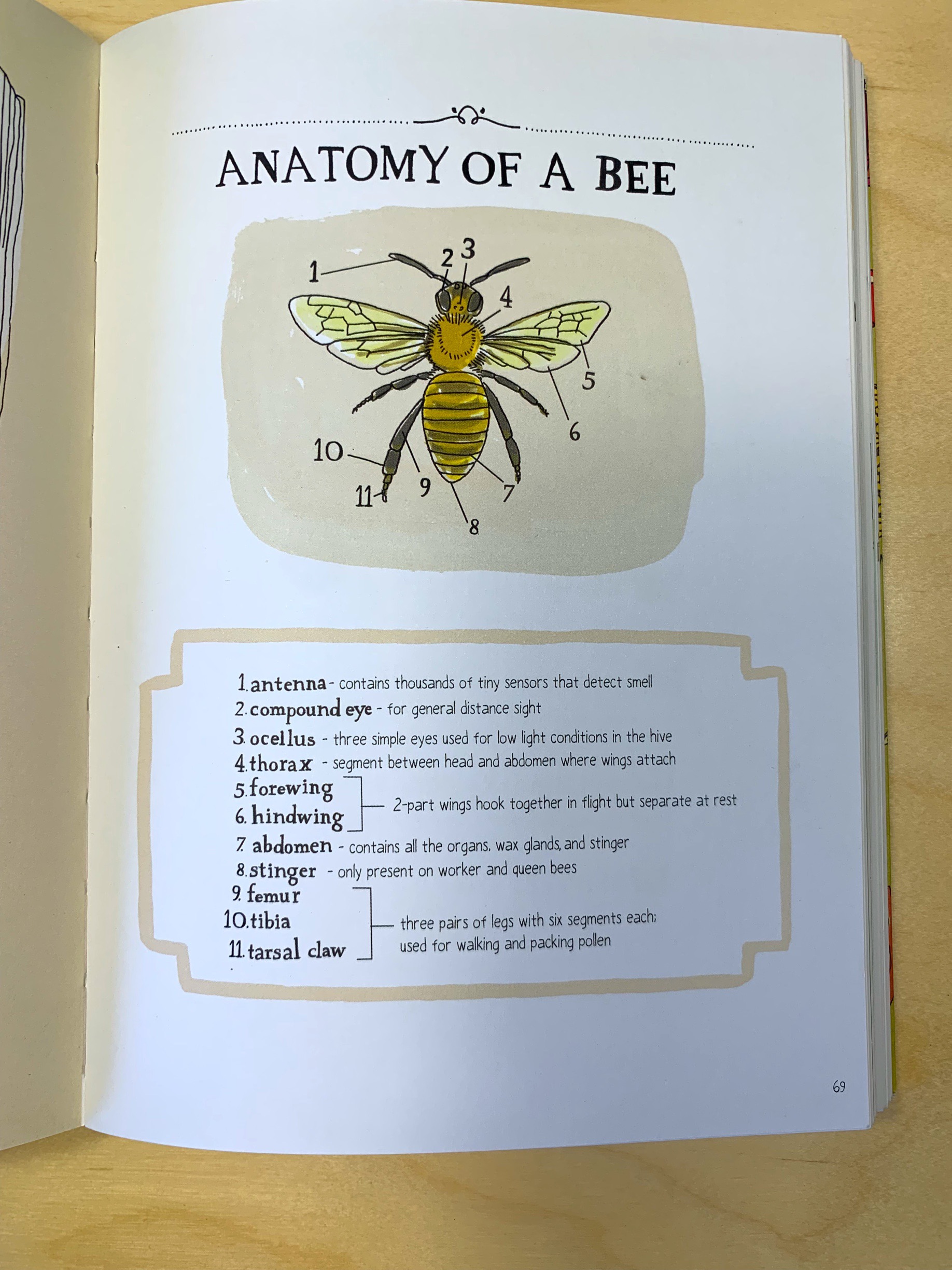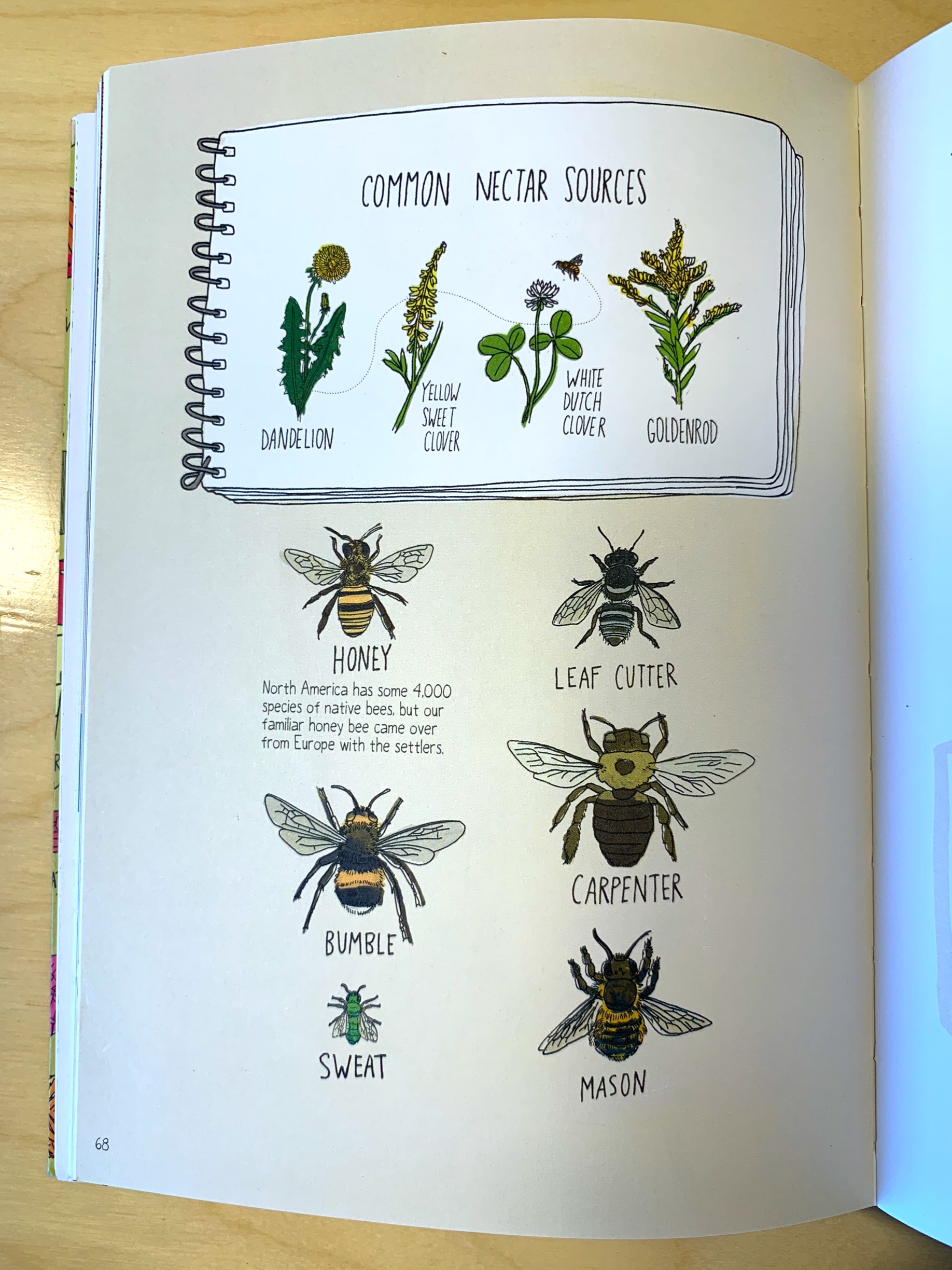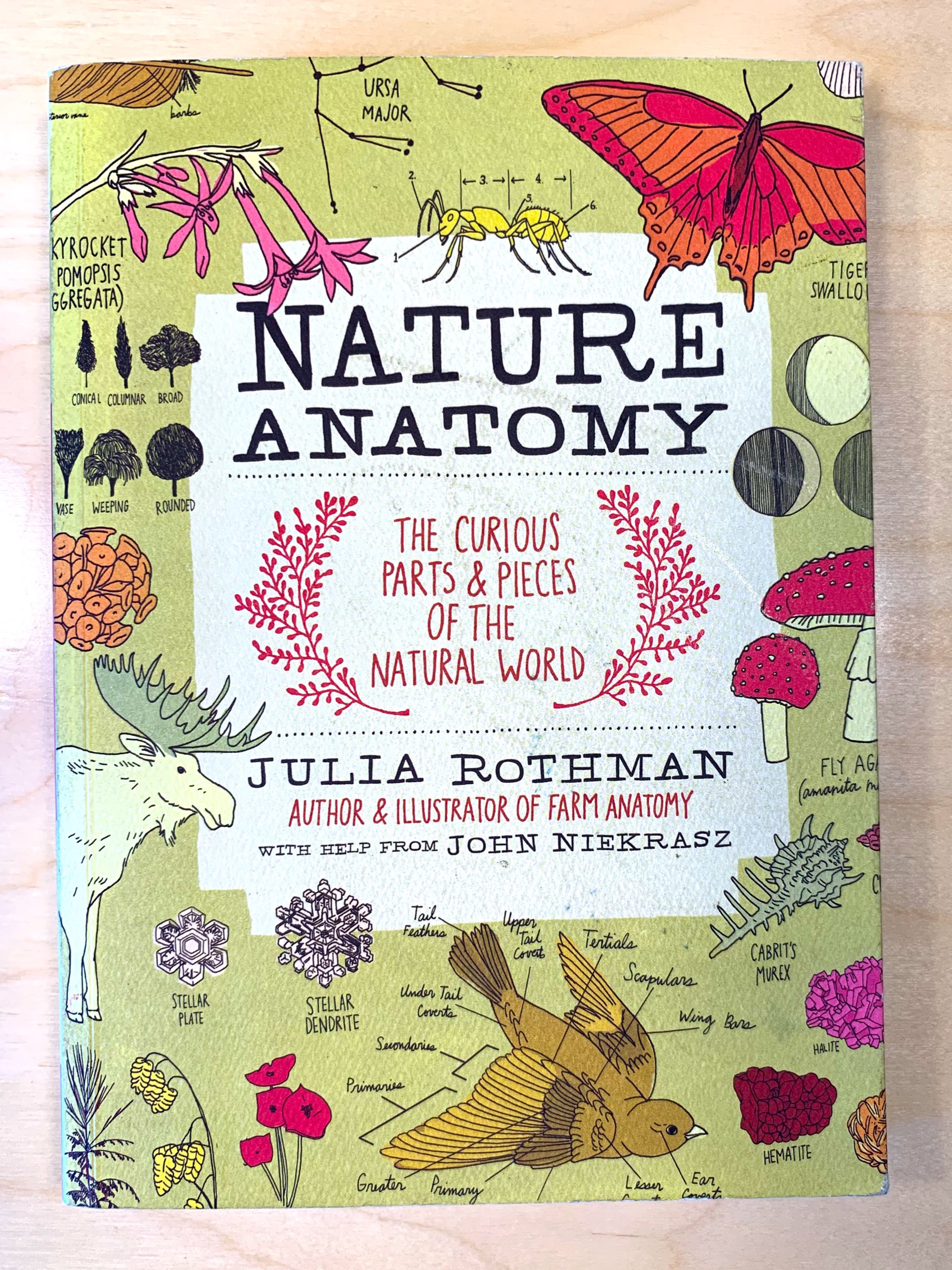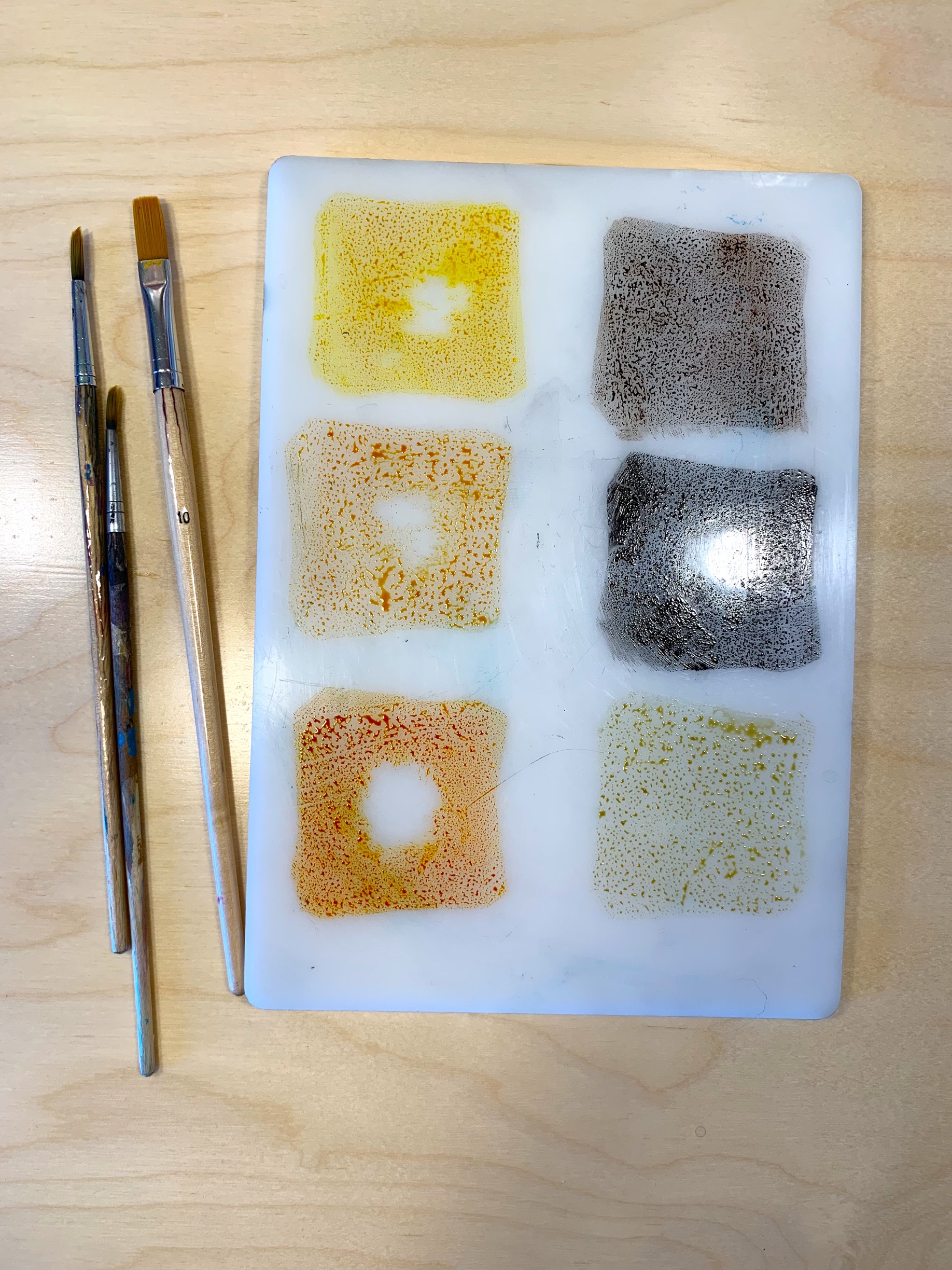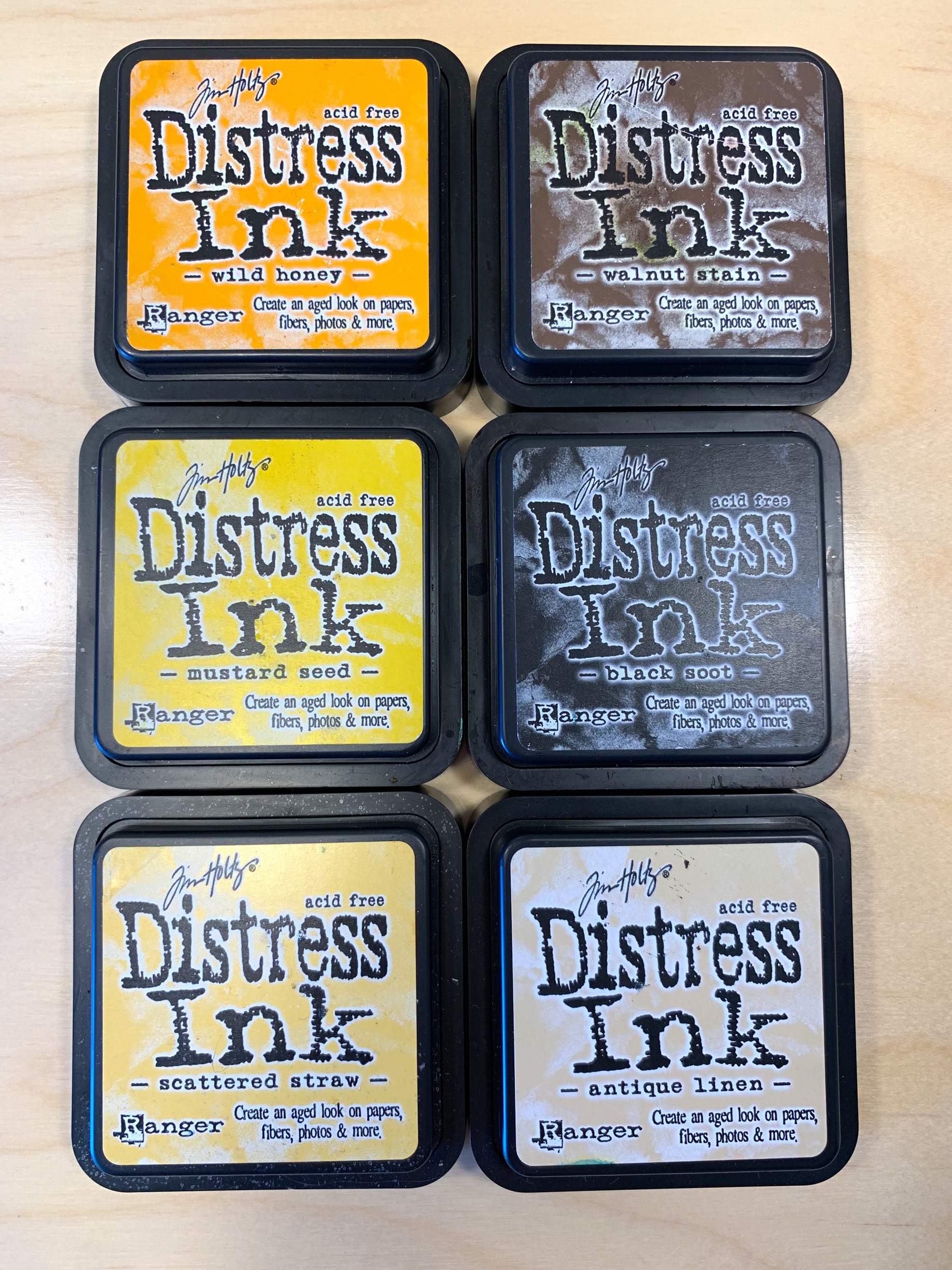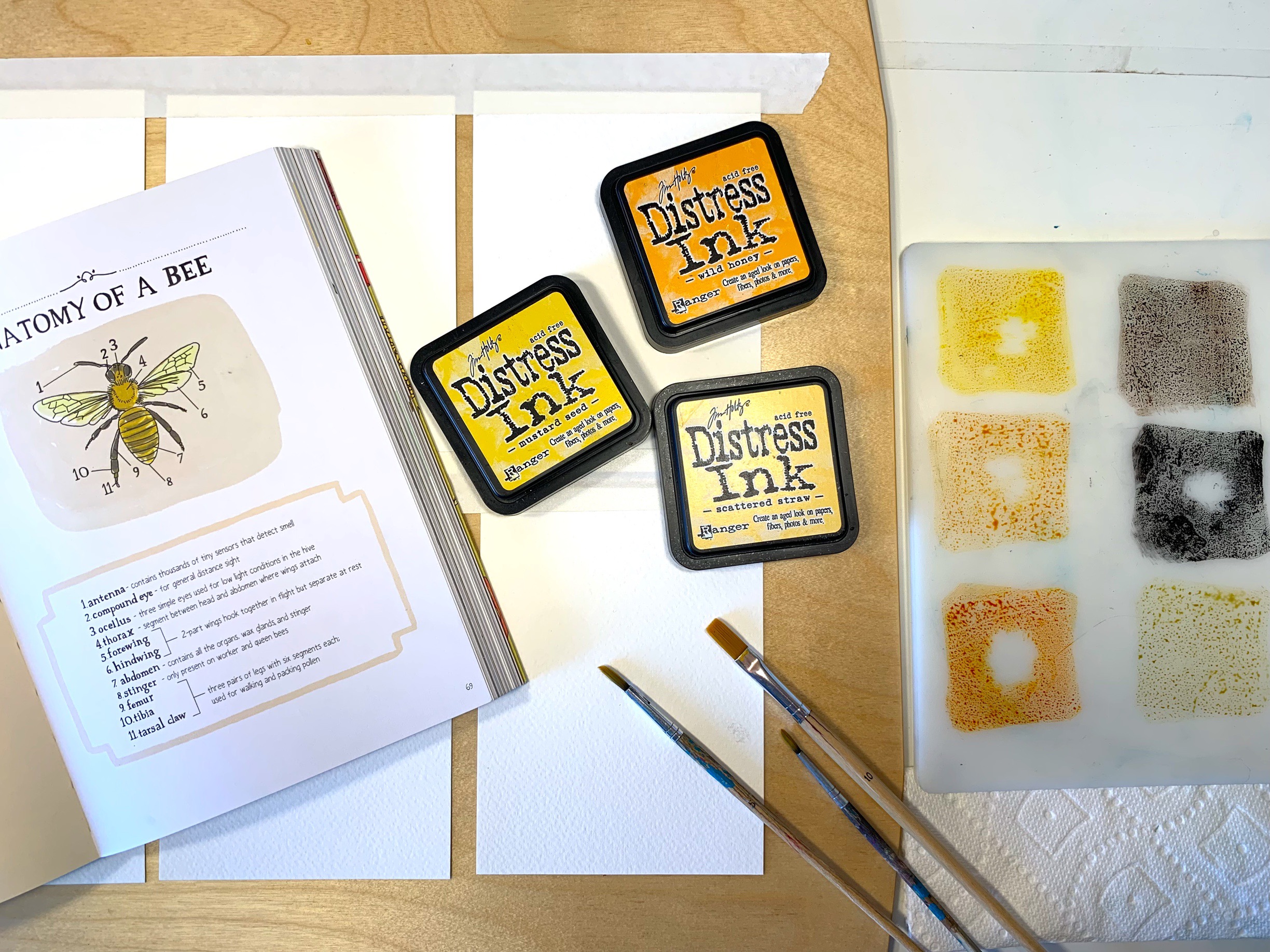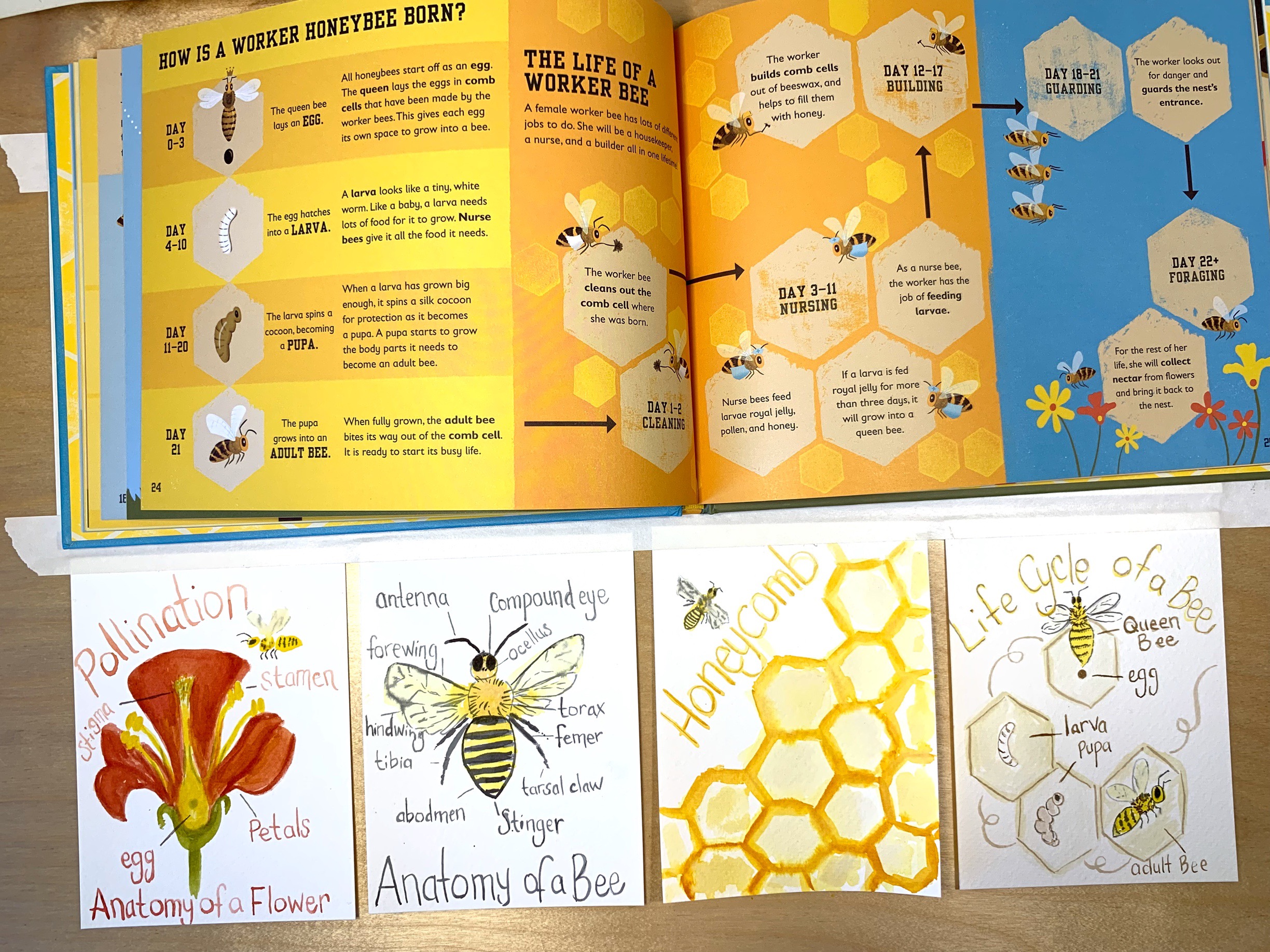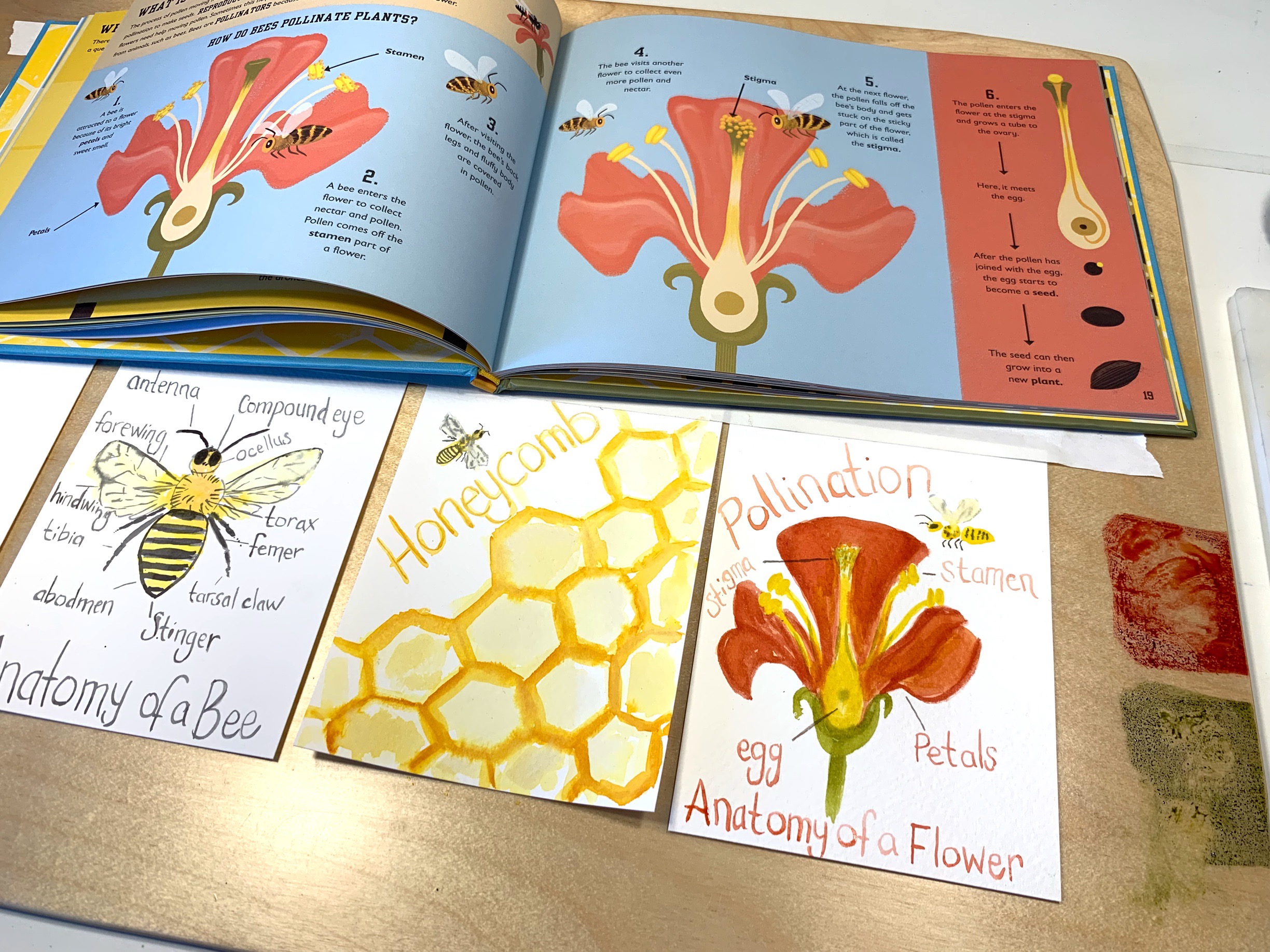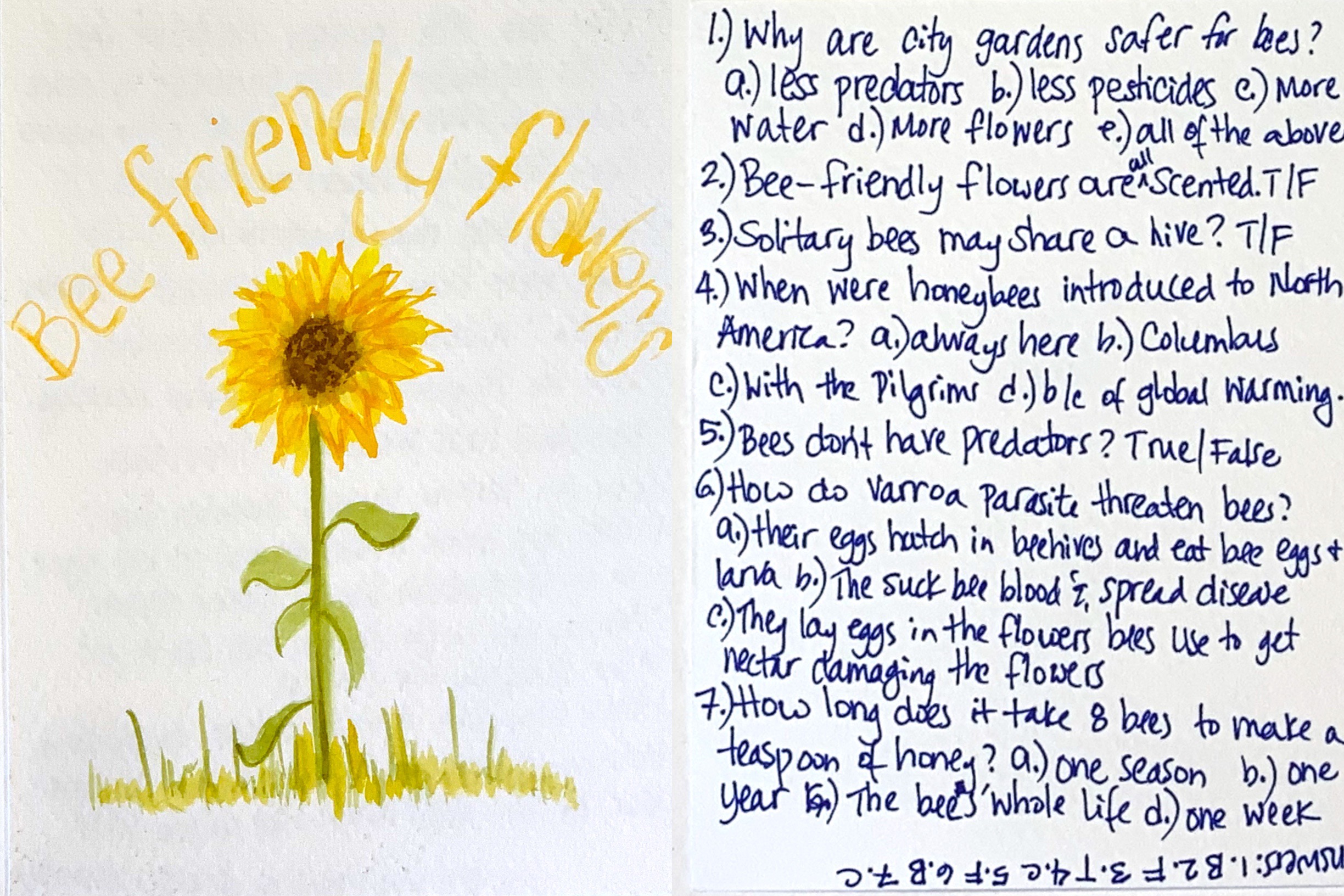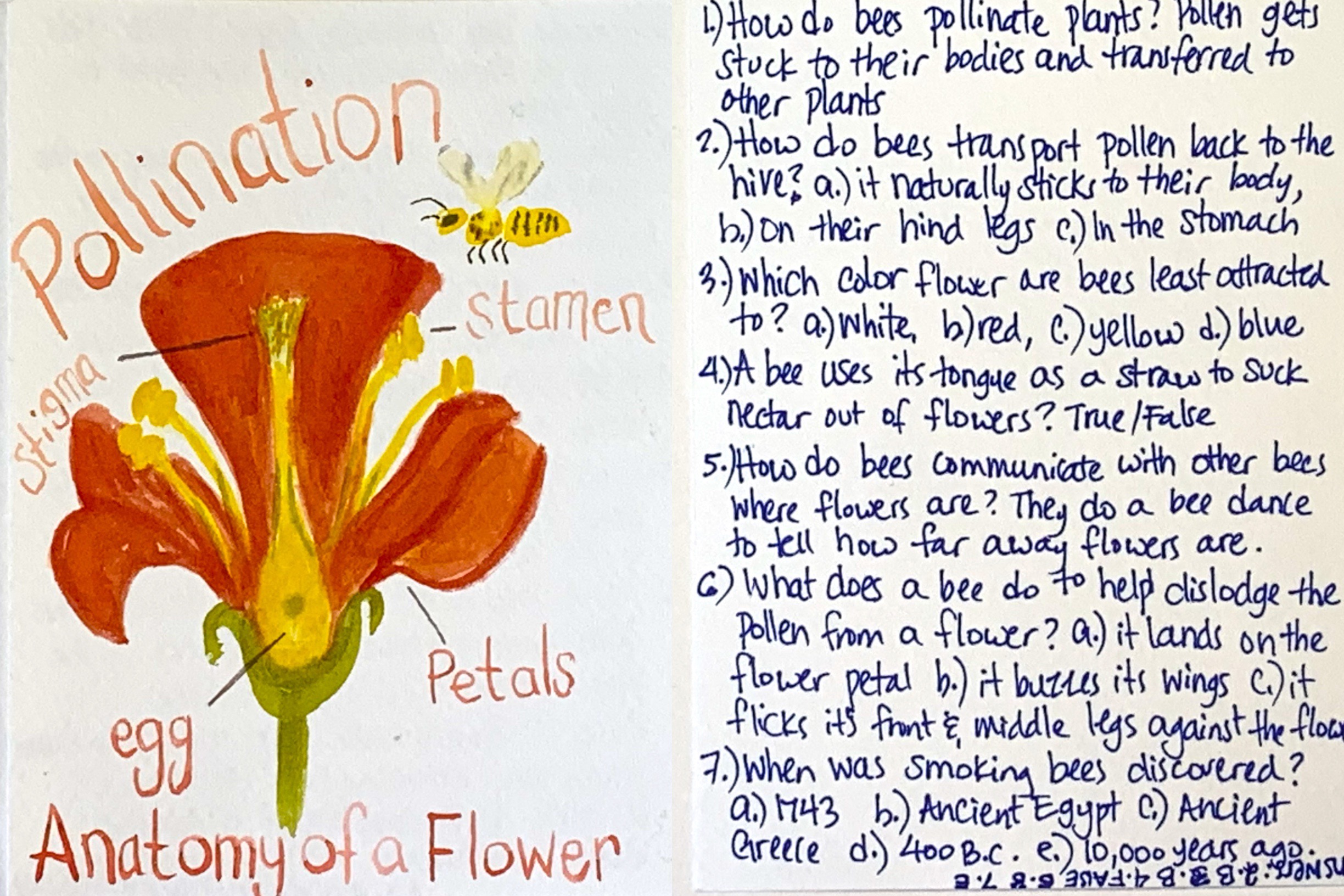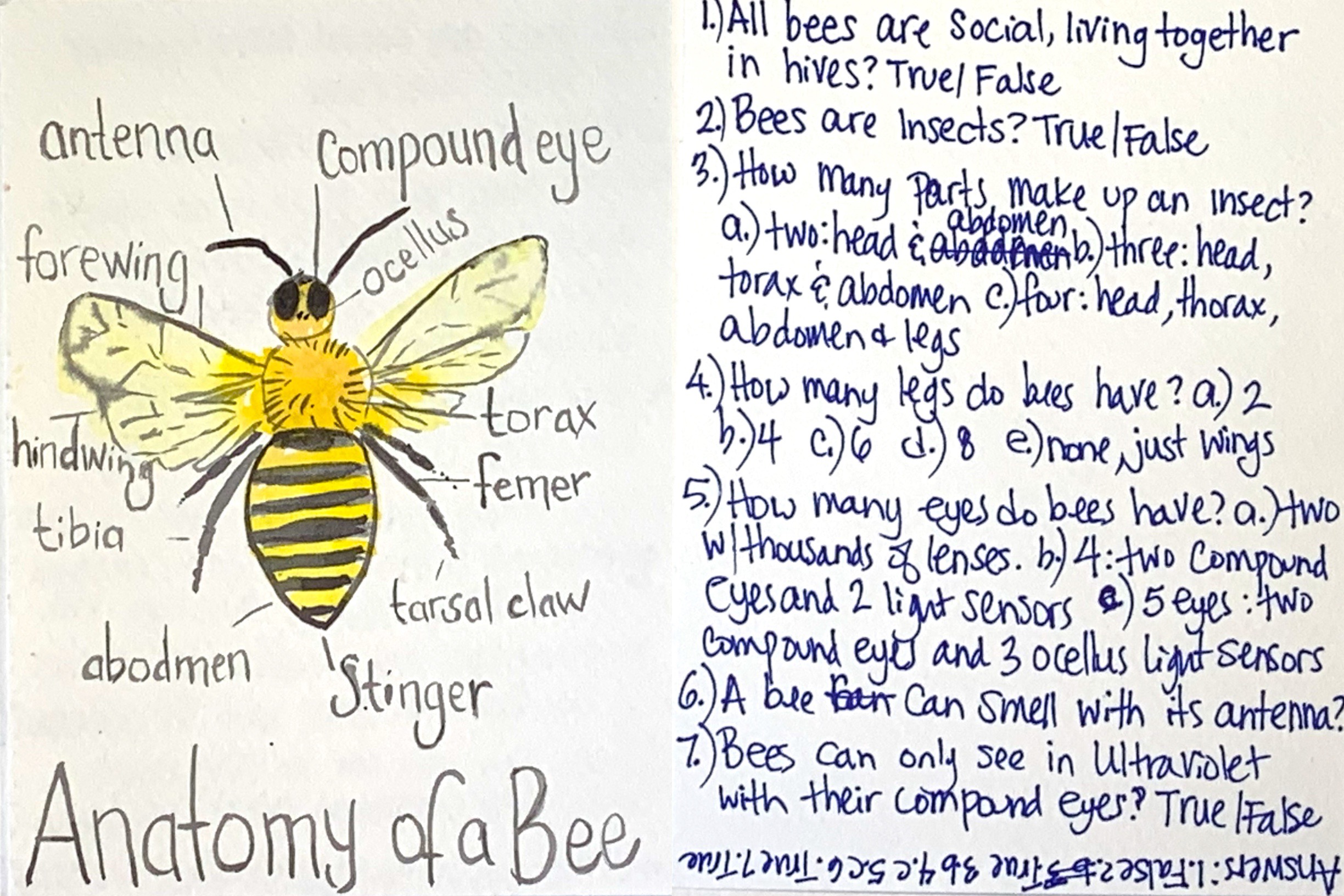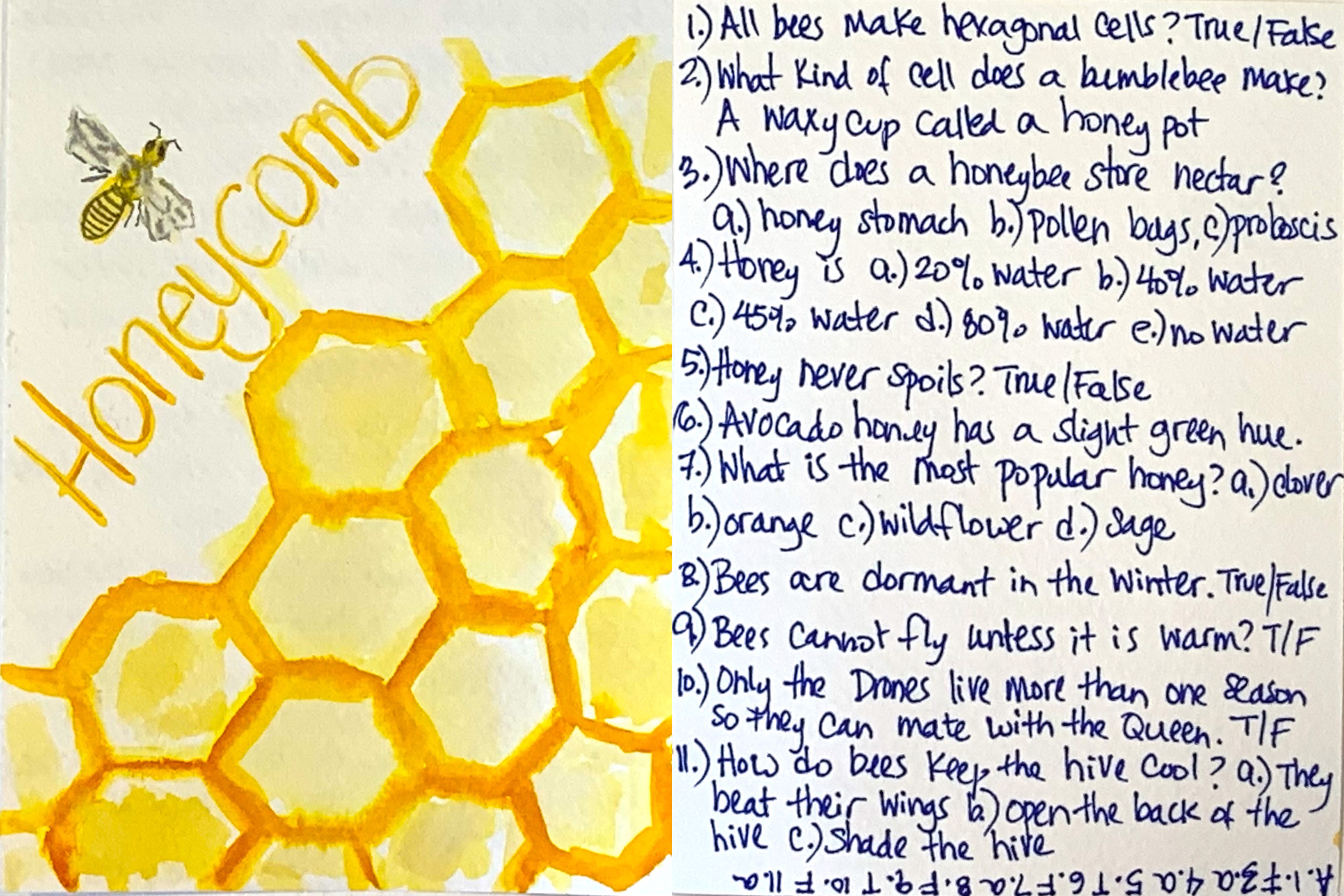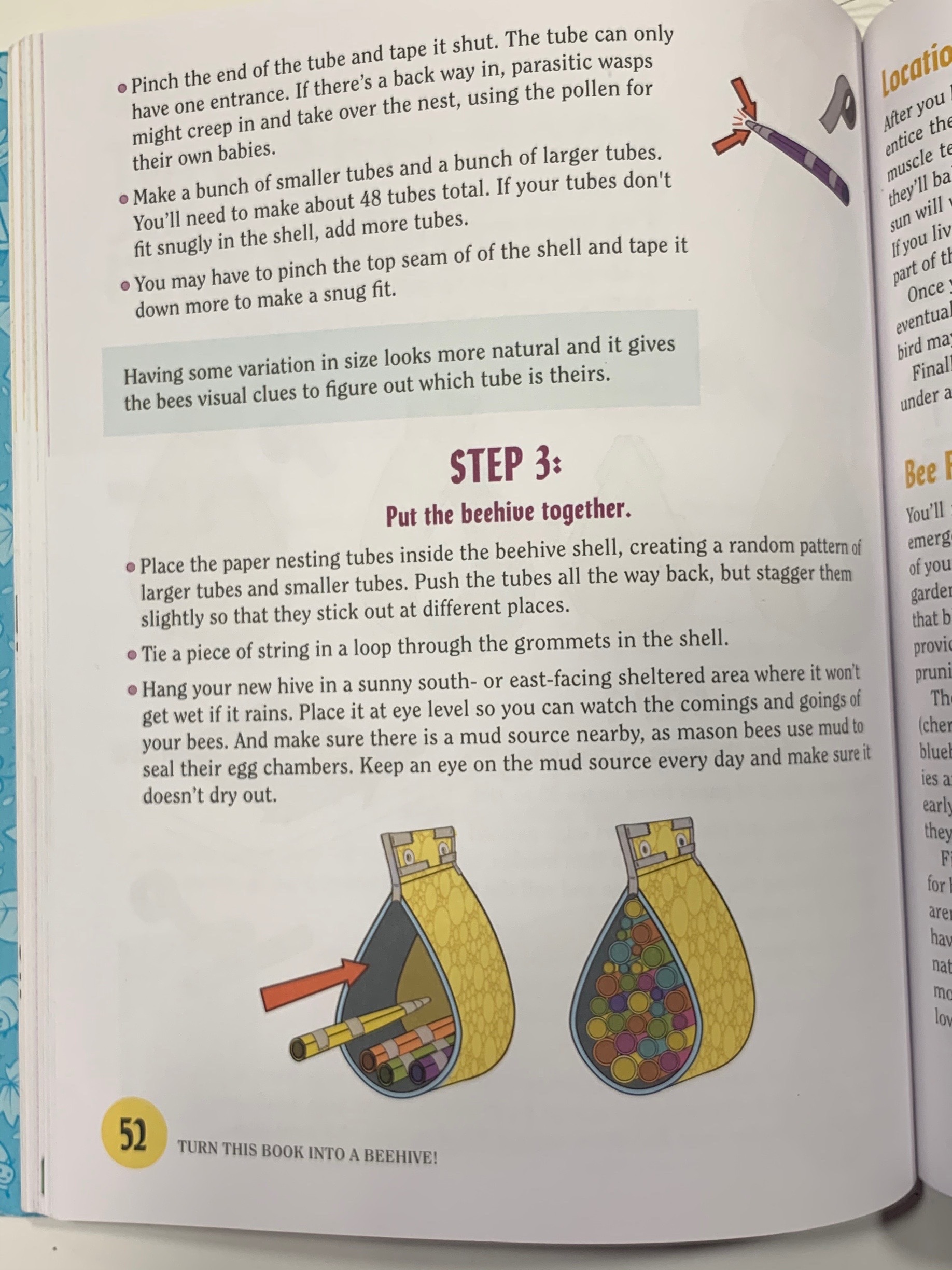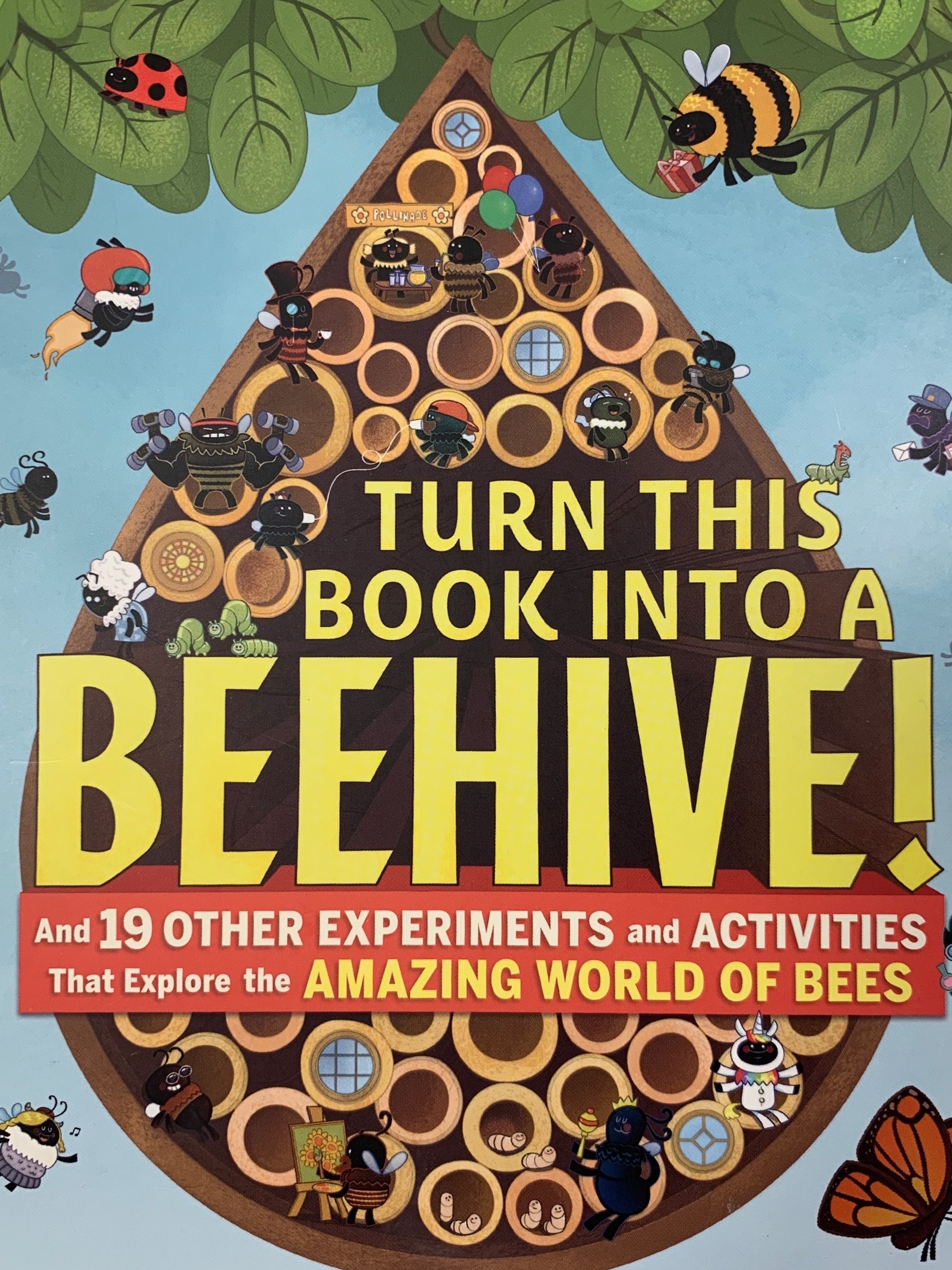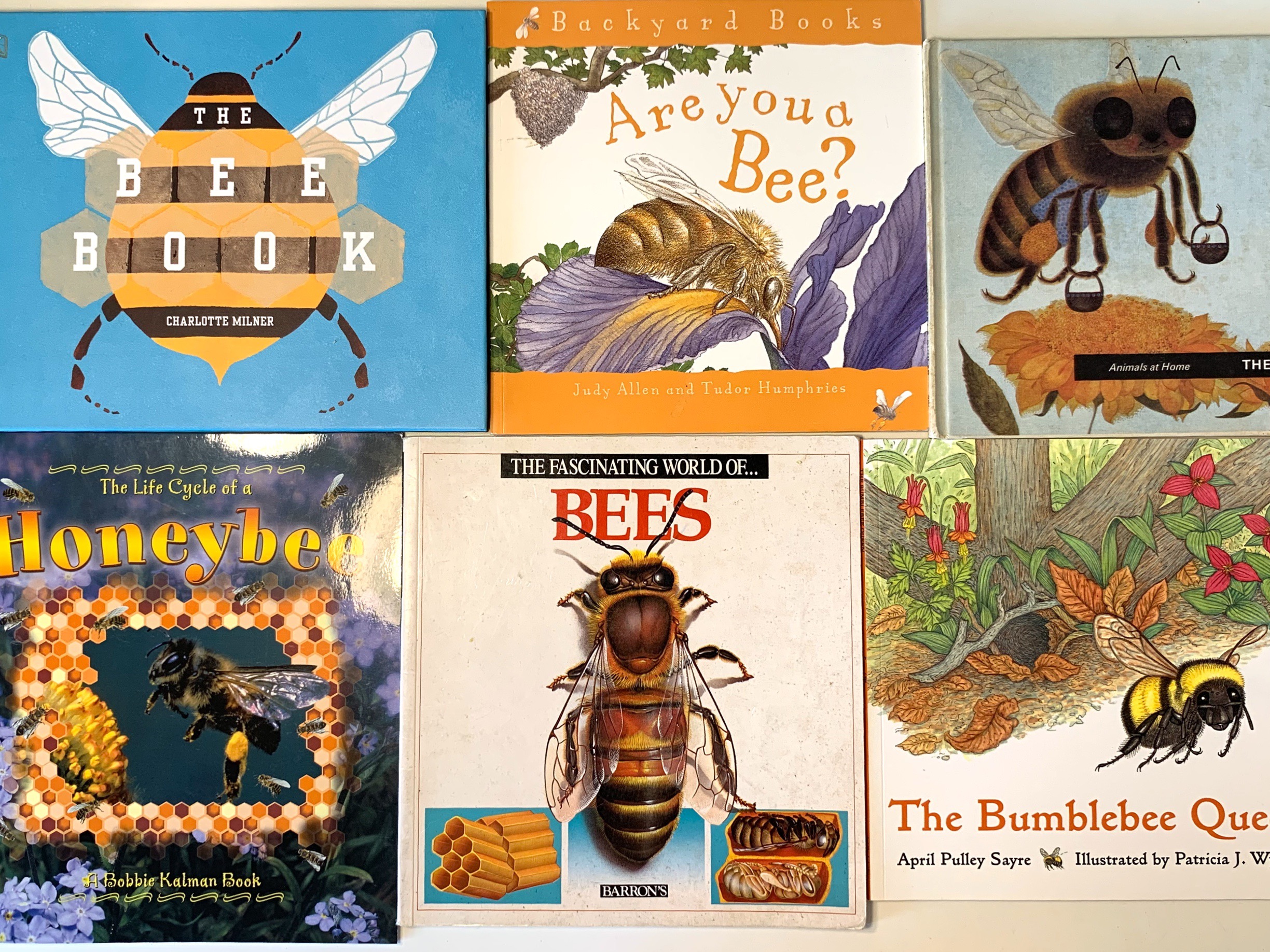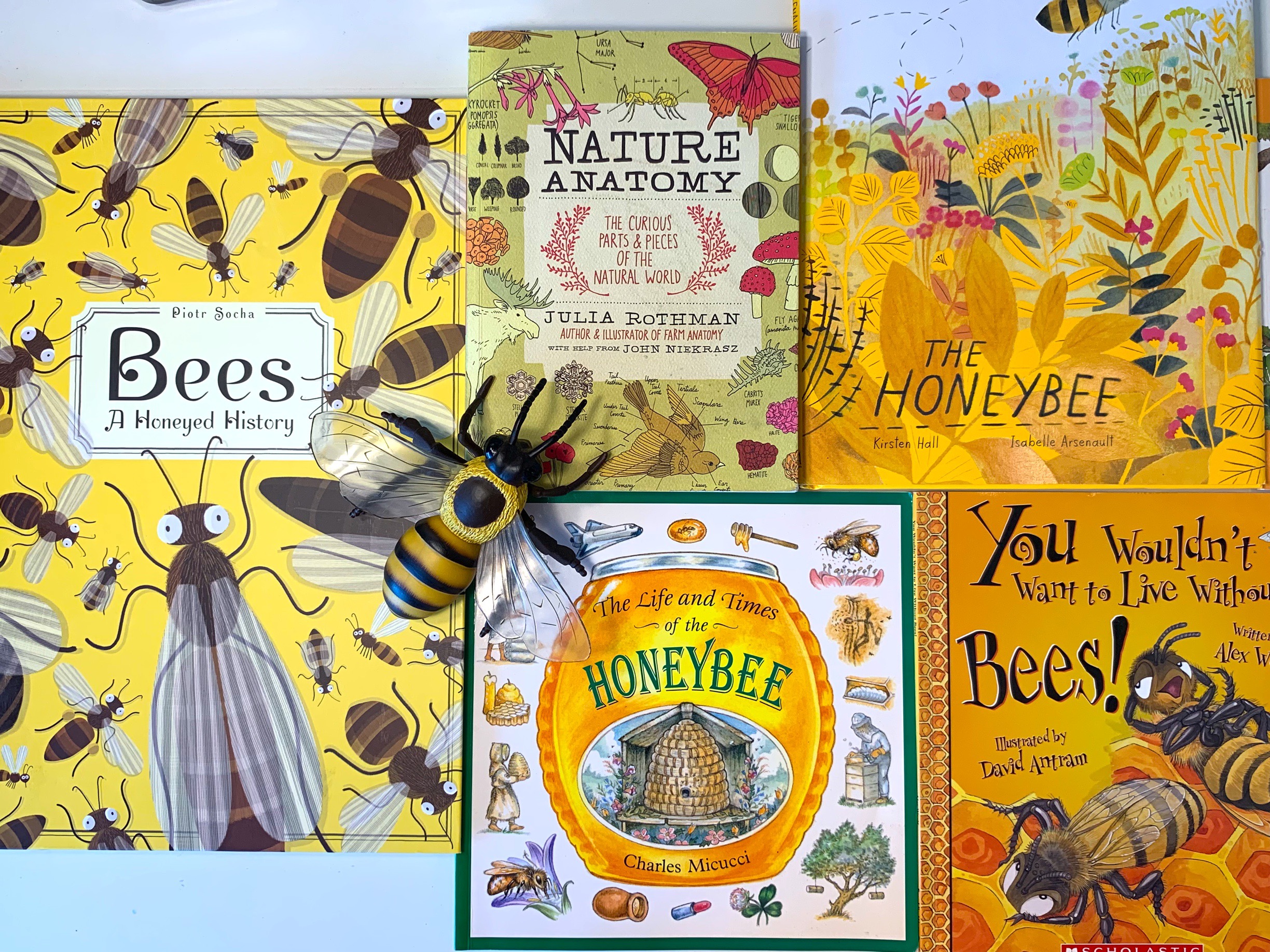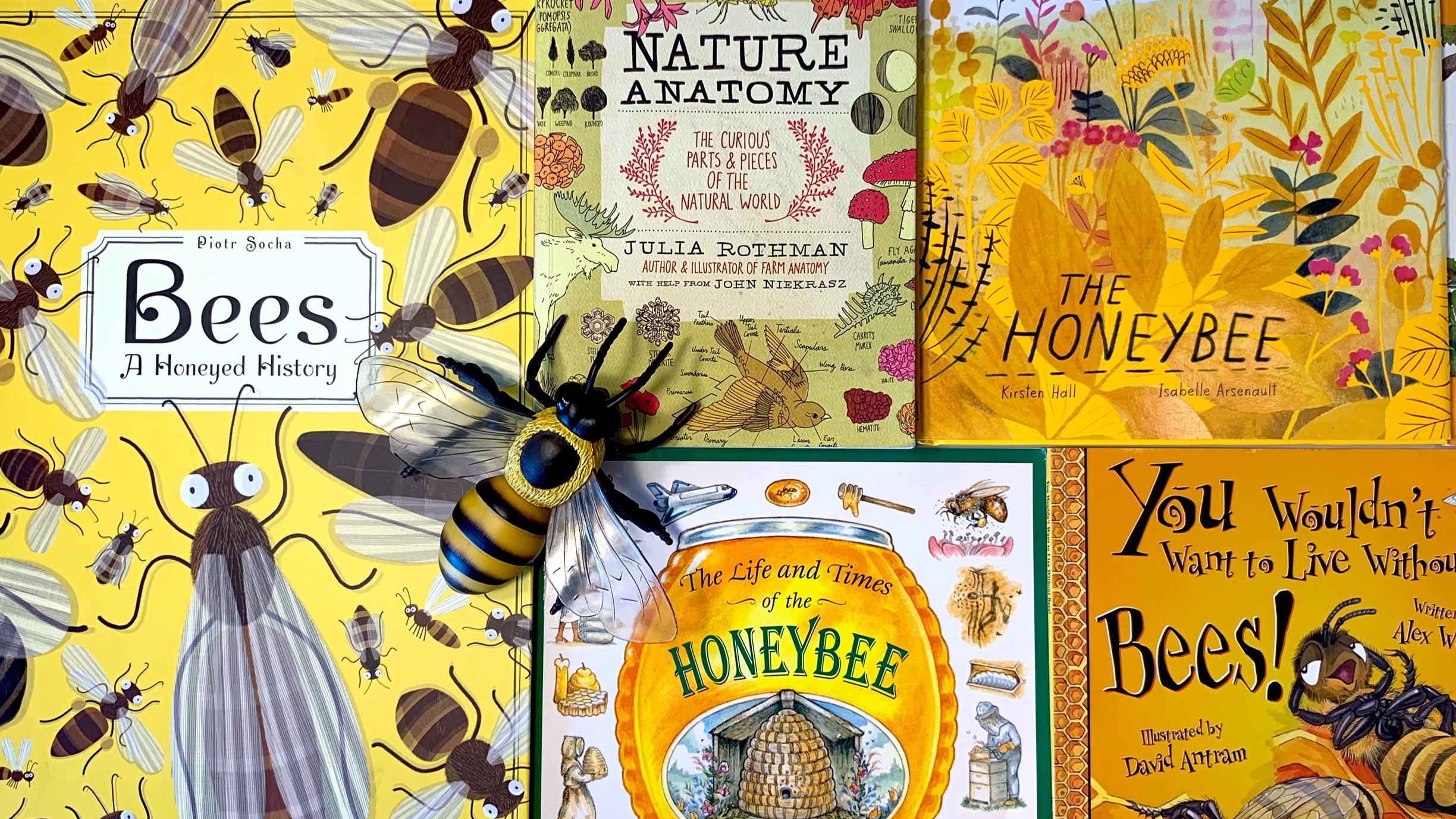
We have since completed this unit again in 2019.
It’s nearly spring and that means we are putting our history units aside and welcoming spring with our nature units. We are kicking it off with this small unit study on Bees and Honey. I’ve set aside a week for this unit which includes two project kits we got from Nature Watch as well as a hands-on project from a the Honey Bees project book.
Check out the rest of the videos in our Unit Study on Bees and Honey.
Find me on YouTube, Twitter, Instagram and Facebook
How To Make A Needle Felted Bee
We continue our unit on bees with this hands on project. We are using the book Explore Honey Bees Book by Cindy Blobaum. Originally, I had intended for my six and 10 year old to felt a single bee with me. A large one. An easy one. But when the time came to felt this bee, my kids were not interested. They were playing. I don’t mind. I start our projects anyway or wait for them. Play is important and I aim not to interrupt wholesome creative open ended play. So when I began my felted bee, which was going to be the example, I looked at our supplies and incorrectly determined that there wasn’t enough black wool to felt a single large bee. Instead I decided to felt a small one. That was mistake number one! This little bee looks darling in the end, but it was not the satisfactory activity I had hoped up. I began felting mine and about a third of the way into the project, my children joined me and began working on theirs. They made some changes to theirs to simplify the process and theirs turned out delightful! You can see pics of their work on the blog post that accompanies this video.
You can find felting supplies at A Child’s Dream: wool and needles.
Directions
Supplies: Merino wool top in yellow, black and light pink or taupe, felting needles, a foam pad to work on and black pipe cleaners
Duration: 20-30 minutes
Level: ages 8 and up (though my six year made a super cute one!)
Check out the rest of the videos in our Unit Study on Bees and Honey.
Find me on YouTube, Twitter, Instagram and Facebook
Life Cycle of a Honey Bee
This project is both educational and artistic. It was fun, easy and satisfying to make. We use the book by Cindy Blobaum called Explore Honey Bees! with 25 Great Projects as inspiration for this project. This book comes with information on honey bees as well as easy-to-do activities for kids of all ages. You can find the book at Nature-Watch.
For this project you will need:
1 large piece of durable paper. We use Fabriano 90 lb. watercolor paper measuring 9″x12″
1 grain of rice for the ‘egg’
1 small piece of beeswax for the ‘larva’ (play dough would be a suitable alternative)
1 small piece of wool batting/wool top for the pupa cocoon (a cotton ball would be a perfect alternative)
1 sticker or drawing of an adult bee (we used our felted honey bee from a previous project)
pencil, glue and pastels.
Duration: 20-30 min with 20 min of prep and cleanup (not including felting the bee)
Level: 4th grade and up
Other materials: book on bees and their life cycle for information to add to the finished project.
Check out the rest of the videos in our Unit Study on Bees and Honey.
Find me on YouTube, Twitter, Instagram and Facebook
How to Make a Bee Stinger
This DIY bee stinger project is easy to do, affordable and educational. We did this project as part of our Honey and Bee unit study.
This project was so easy, you might even have all the supplies you need already. All you need are cardboard or chipboard and tissue paper. Other supplies are scissors and pencil. We got the idea for the activity from Cindy Blobaum’s book Explore Honey Bees! With 25 Great Projects.
Supplies: Chipboard, scissors, pencil and tissue paper.
Directions: Cut two stingers, one shaped like a tall triangle and the other barbed. Pierce a piece of tissue paper. See how the barbed stinger gets stuck. This represents the stinger of a drone honey bee.
Duration: 10 minutes
Clean and prep: 5 minutes
Level: all grades
Cost: negligible
Check out the rest of the videos in our Unit Study on Bees and Honey.
Find me on YouTube, Twitter, Instagram and Facebook
How to Draw a Bee | Drawing Tutorial
We are using the book Explore Honey Bees! With 25 Great Projects by Cindy Blobaum as part of our unit study on honey bees. We have worked through this book reading passages and working on projects and today we are going to draw a simple honey bee using one of the activities in the book.
This drawing was quick and easy with the instructions in the book. We used our Lyra watercolors from A Child’s Dream and a pencil. We did our drawing/watercolor on Fabriano 90 lb. watercolor paper available at Dick Blick.
Check out the rest of the videos in our Unit Study on Bees and Honey.
Find me on YouTube, Twitter, Instagram and Facebook
Stages of a Bee Metamorphosis | Life Cycle of a Bee
We continue our study of bees and honey with the easy and educational game that is quick to make and costs hardly anything at all. Affordable projects and games like this one are great for homeschoolers as well as for science teachers in a classroom setting because they are easy to instruct, practically free, fun to play and very educational, not to mention memorable and interactive. That’s what I call a win, win, win activity!
This folded paper game can be used for any subject from math to history. We’ve made them before for history and poetry. They are great to keep around your school room for fun review work when your unit study is complete.
Directions:
Cut a piece of paper into a square (8″x8″ or 9″x9″ works best).
Fold paper following directions in the video
Write stages of a bee on the inside flaps.
Lift the flap and draw the stage of the bee and add a couple sentences about that stage.
On the outside flaps, write numbers that coordinate with a bee (I wrote 3 (body parts), 6 (legs), 12 (days of a larva) and 4 (wings))
Play the game!
Cost: 15 cents
Time: 20-30 minutes depending on how long it takes a student to write the information about each stage of a bee
Grade: 8-9 years and up
Level: Easy
Check out the rest of the videos in our Spring Unit Study on Bees and Honey.
We used the book Explore Honey Bees! With 25 Great Projects by Cindy Blobaum.
Find me on YouTube, Twitter, Instagram and Facebook
HONEYCOMB CANDLES
This is one of our favorite projects this year and I’m sure we’ll do this year after year from now on. Rolling honeycomb beeswax is so easy, young children can easily participate. This kit is from Nature Watch. You can find classroom kits as well as individual kits designed for homeschoolers. The classroom kit we bought comes with an instruction manual with information on bees and honey as well as 30 4″x4″ squares of honeycomb wax, 30 wicks, 30 honey sticks and 30 baggies to store your candle.
Honey Tasting
“I’ve never tasted a honey I don’t like,” I told the honey vendor at the farmer’s market. Then he handed me buckwheat honey and I made a face. I guess there is a honey I really don’t like! I’m so glad buckwheat honey is included in this honey tasting kit because it will be a surprise to taste it. The other flavors are orange blossom, wildflower and blueberry. All three of them are mild and tasty. This kit, “Food Doesn’t Grow In Supermarkets”, is by Nature-Watch and comes in a classroom kit for 25 students. It’s well put together with a total of 100 honey sticks, 2 worksheets for each student and an information packet for the teacher.
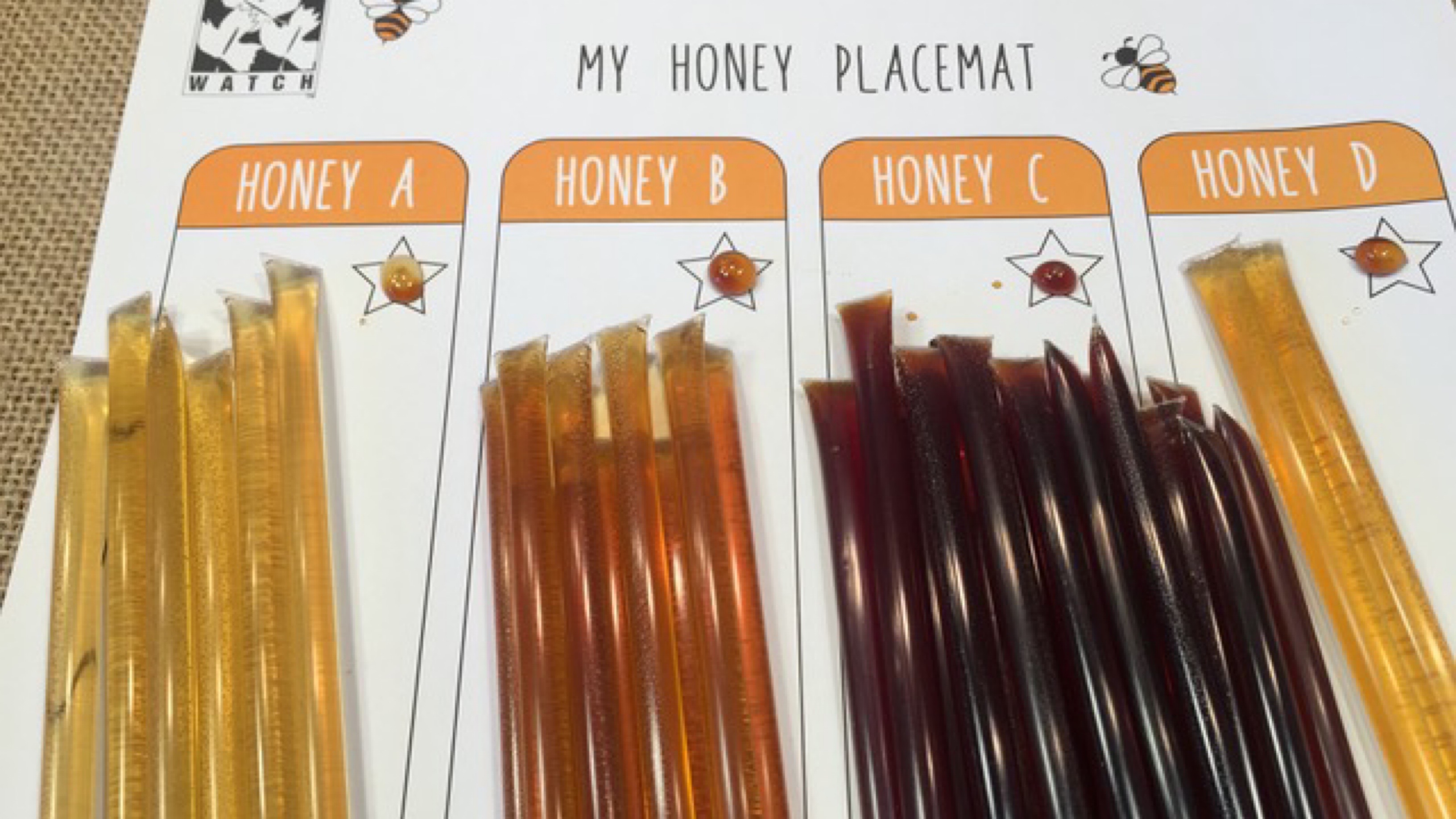
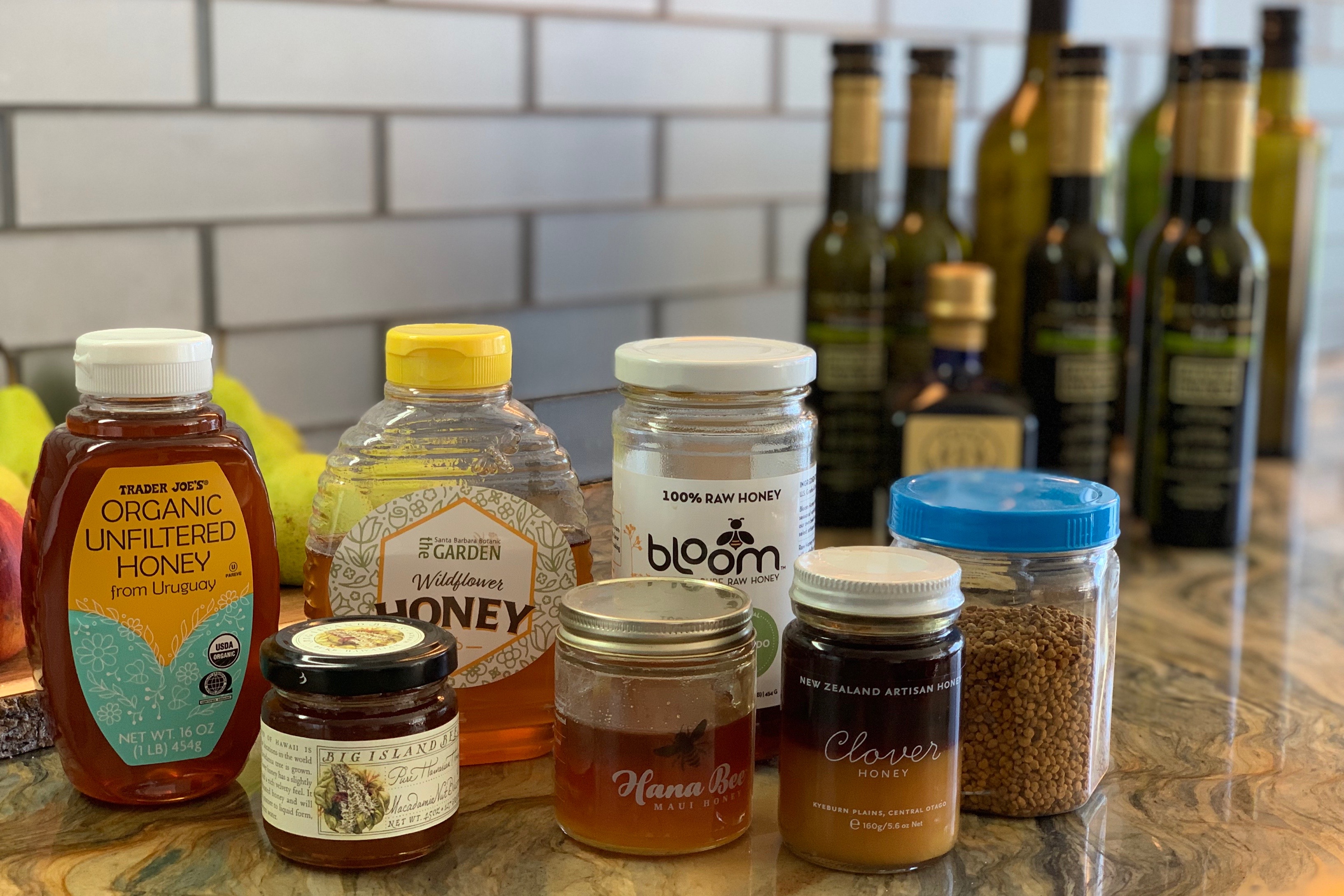
Science Curriculum Review | Unit Study Review
We have completed our unit on bees and honey, and now it’s time to review the materials we used. We really enjoyed most of what we used, but we were quite surprised that some of our most beloved books didn’t fair so well.
Materials for this unit were purchased using charter school funds and were purchased from Acorn Naturalists and Nature-Watch. Art materials were purchased from Waldorf Supplies and A Child’s Dream.
See the projects we did for this unit.
Find me on YouTube, Twitter, Instagram and Facebook
How To Put Together a Unit Study | Bees
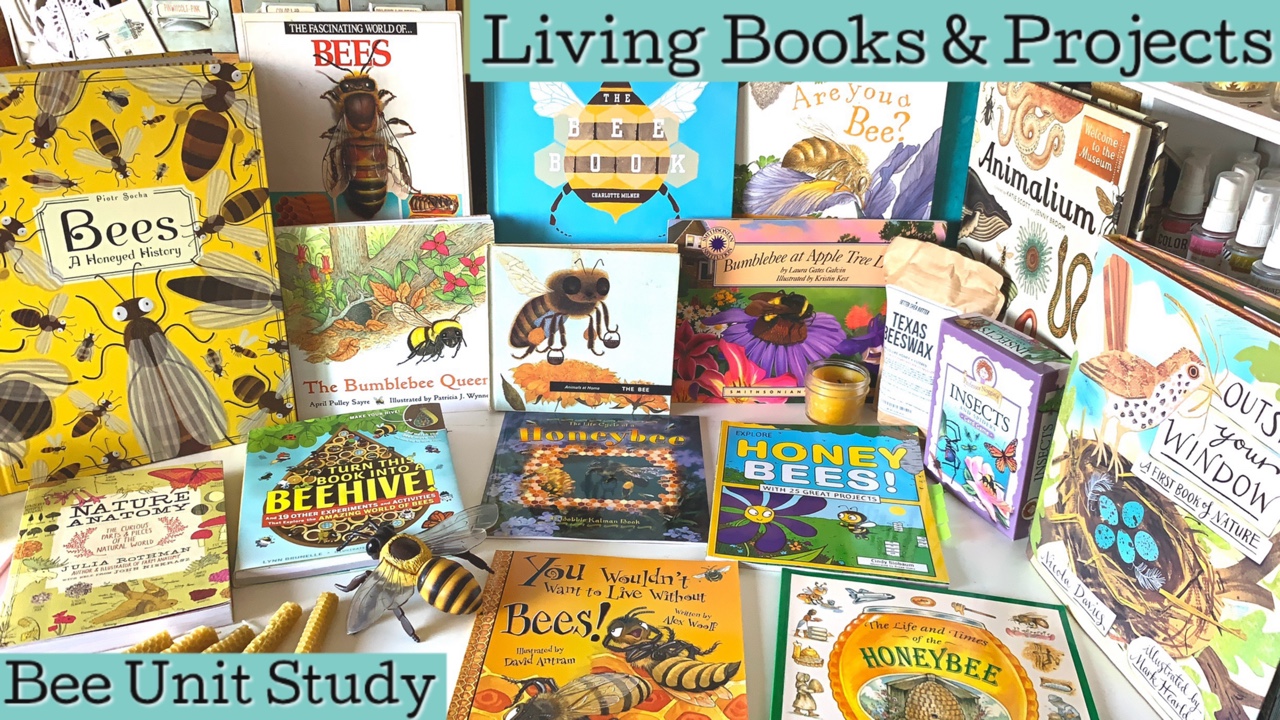
Want to see what too many resources for a unit looks like, check out this video to see a selection of redundant materials for a short unit study on Bees. After completing our last Bees and Honey unit, I continued to source material that I found inspiring for the next time we planned a Bees unit. Well, now’s that time and I’ve collected more materials than I can possibly use. Sadly, nearly all of them were superb books and resources which made narrowing down what we loved challenging! They were all so good!! But you certainly don’t need this many. If I were to whittle down the list to something a bit more tidy, I would include about half of what I show here.



Here’s a complete list of the resources we’ve used for this unit:
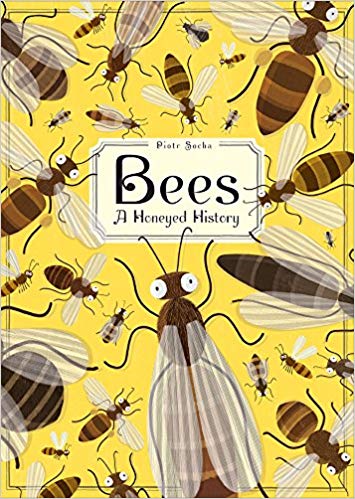


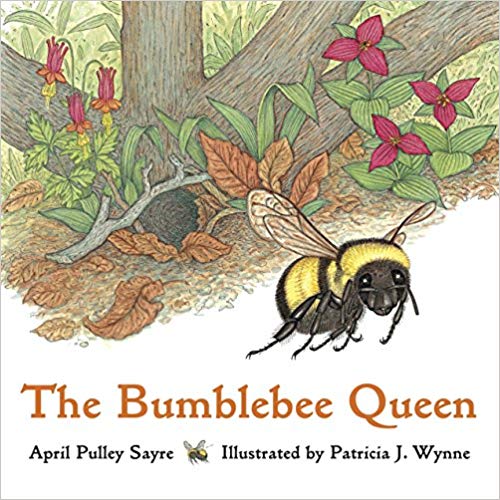



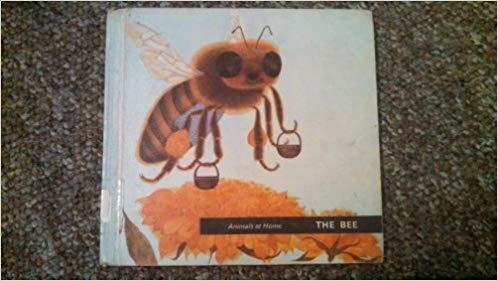
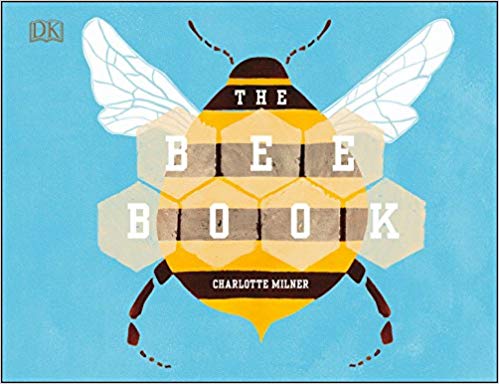



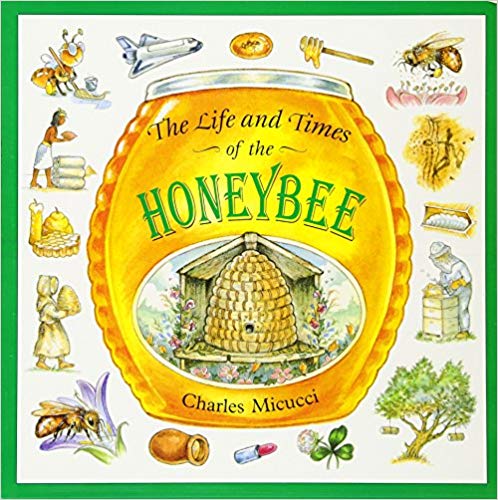

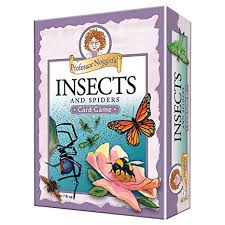

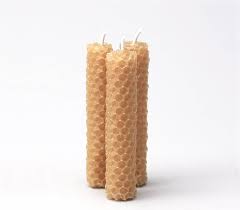

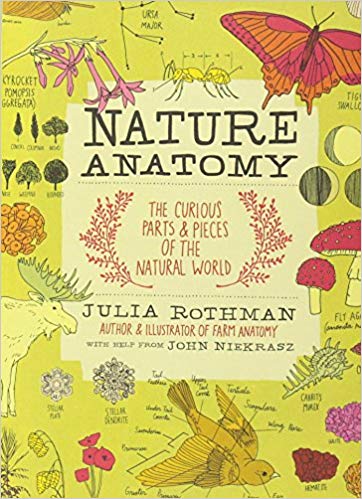
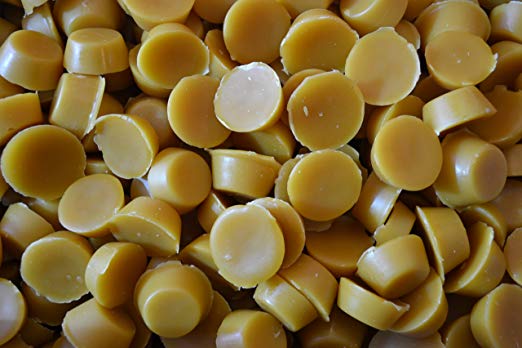
Beeswax
Bees: A Honeyed History by Piotr Socha
The Honeybee by Kirsten Hall and Isabelle Arsenault
Honey Bees with 25 Great Projects by Cindy Blobaum
The Bumblebee Queen by April Pulley Sayre
The Bumblebee of Apple Tree Lane by Laura Gates Galvin
Insect Life by Arabella B. Buckley
The Bee by Animals at Home by Marion Koenig
The Bee Book by Charlotte Milner
The Life Cycle of a Honeybee by Bobbie Kalman
Turn This Book Into A Beehive by Lynn Brunelle
The Fascinating World of Bees by Barron’s
You Wouldn’t Want To Live Without Bees! by Alex Woolf
The Life and Times of the Honeybee by Charles Micucci
Backyard Books Are you a Bee? by Judy Allen and Tudor Humphries
Professor Noggins Trivia Card Game Insects
Nature Watch Honey Tasting Kit
Nature Watch Beeswax Rolling Kit
Nature Anatomy by Julia Rothman
See the projects we did for this unit.
Materials for this unit were purchased using charter school funds and were purchased from Acorn Naturalists and Nature-Watch. Art materials were purchased from Waldorf Supplies and A Child’s Dream.
Find me on YouTube, Twitter, Instagram and Facebook
Bee Chalk Drawing
Not every new unit or main lesson blocks gets a new chalk drawing and in some cases, one chalk drawing serves for several units as this one does. This chalk drawing has the image of an owl, the life cycle of a frog and a bee and beehive. While it’s not my favorite chalk drawing, I think it serves the purpose of inspiring us throughout this unit and adds beauty to our homeschool space. Collected around the chalk drawing are the books and resources we’ll be using for this series of units.
While this part of the chalk drawing only took 20 minutes, the owl took 65 minutes and the life cycle of a frog took 20 minutes bringing the grand total for this chalk drawing at 1 hour and 45 minutes. That may not seem too bad for a 4′ by 6′ drawing, but compared to other images, it was. Also, I can’t say I love the bee part!! I do wish I would have made a hexagon pattern with a bee in the beehive. But there’s always next time!
For this drawing, I used by Sargent Art Square Chalk Pastels as well as a number of resources as drawing inspiration.



Materials for this unit were purchased using charter school funds and were purchased from Acorn Naturalists and Nature-Watch. Art materials were purchased from Waldorf Supplies and A Child’s Dream.
Find me on YouTube, Twitter, Instagram and Facebook
Flower Dissection | Botany | Bee Unit Study | Charlotte Mason Nature Study
I had mixed feelings about the flower dissection we did for our Bee Unit Study. While I think this is a fabulous project for an older student (middle school and older), I had reservations about doing this project with my 8-year-old daughter. I wasn’t keen on us taking beautiful flowers and destroying them to examine the insides and to identify the parts. But we did it despite my feelings, and it turned out okay! It’s my opinion that when the children are young, we should marvel at what we see and behold its beauty rather than take it apart. There is a deep education in being able to be present with your surroundings and having wonder and curiosity in what you see without having to understand it on an analytical basis. I would rather save that analytical and logical and scientific approach for when the students are older.
This activity was from the book Turn This Book Into A Beehive by Lynne Brunelle.





How Does a Bee Get Pollen?
I have two very simple yet informative and educational demonstrations to show you on how bees get pollen from plants. These demonstrations are from the book Turn This Book Into A Beehive by Lynn Brunelle. This has been a great addition to our unit study and we are loving this book. The part is that you can turn the book into a beehive!
In the first demonstration, we used cheese puffs to show how ‘pollen’ (cheese puff dust) gets from one flower to the next. While we didn’t have the recommended chips, we did use Cheetos and they worked with limited success. Overall, it was a tasty way to learn about bees and pollen.
In the second demonstration, we use plastic wrap stretch across a bowl. We marked the center with a marker and placed some garlic powder in the center. Then resting our lips on the edge of the bowl, we hummed until the garlic powder was disrupted and spread outside the drawn circle. This was to represent how a bee’s buzzing disrupts the pollen as it approaches a flower.


Find me on YouTube, Twitter, Instagram and Facebook
Materials for this unit were purchased using charter school funds and were purchased from Acorn Naturalists and Nature-Watch. Art materials were purchased from Waldorf Supplies and A Child’s Dream.
How To Make Pesticide-Free Bug Spray | Bee Friendly | All Natural
Eco-friendly bug spray that smells like a slow cooked meal? Yes, please! While working through our Bee Unit Study for homeschool, we decided to make our way through the activity book “Turn This Book Into A Beehive” by Lynne Brunelle. In it you’ll find several easy hands on activities to compliment a unit study on bees. And while we’ve done several of the projects in the book, this one is proving to be very useful beyond the lesson.
I did make some modifications to the recipe, so that I wouldn’t be making so much. I also wanted to ensure that it would fit in the spray bottle I had chosen for the bug spray. I also re-seeped the pulp a second time to make more, but I imagine the concentration on the second batch was far more mild than the first.

For this recipe, I used half and onion, 3-5 cloves of garlic, cayenne pepper (about 1/1-1 teaspoon) and some red chili peppers. I blended everything in my NutriBullet with some boiling hot water. This is a little tricky. A safer alternative is to blend everything with lukewarm water, then seep the wet pulp with boiling water. I used about 2 cups of boiling water. I let it seep for 24 hours. I used cheesecloth to strain the pulp out and then poured it into a spray bottle with a teaspoon of dish soap. I seeped the pulp again with about 1-2 cups of boiling water the following day. Since this is an all natural bug spray, I store it in the refrigerator to ensure freshness and so that it doesn’t go bad. So far it keeps for 2 months.
I spray our vegetables, but honestly, I can’t tell if it’s working or not. I’m not such an experienced gardener to know if this spray is working. It’s entirely possible that other factors are killing my plants, like lack of water 😉
This bug spray is so good for the environment. It’s all natural and it ensures that pesticides don’t kill the insects we need like bees. Since bees are necessary for pollination of so many plants, it’s important we to care of their survival.
Find me on YouTube, Twitter, Instagram and Facebook
Materials for this unit were purchased using charter school funds and were purchased from Acorn Naturalists and Nature-Watch. Art materials were purchased from Waldorf Supplies and A Child’s Dream.
Trivia Based Cards For Bee Unit
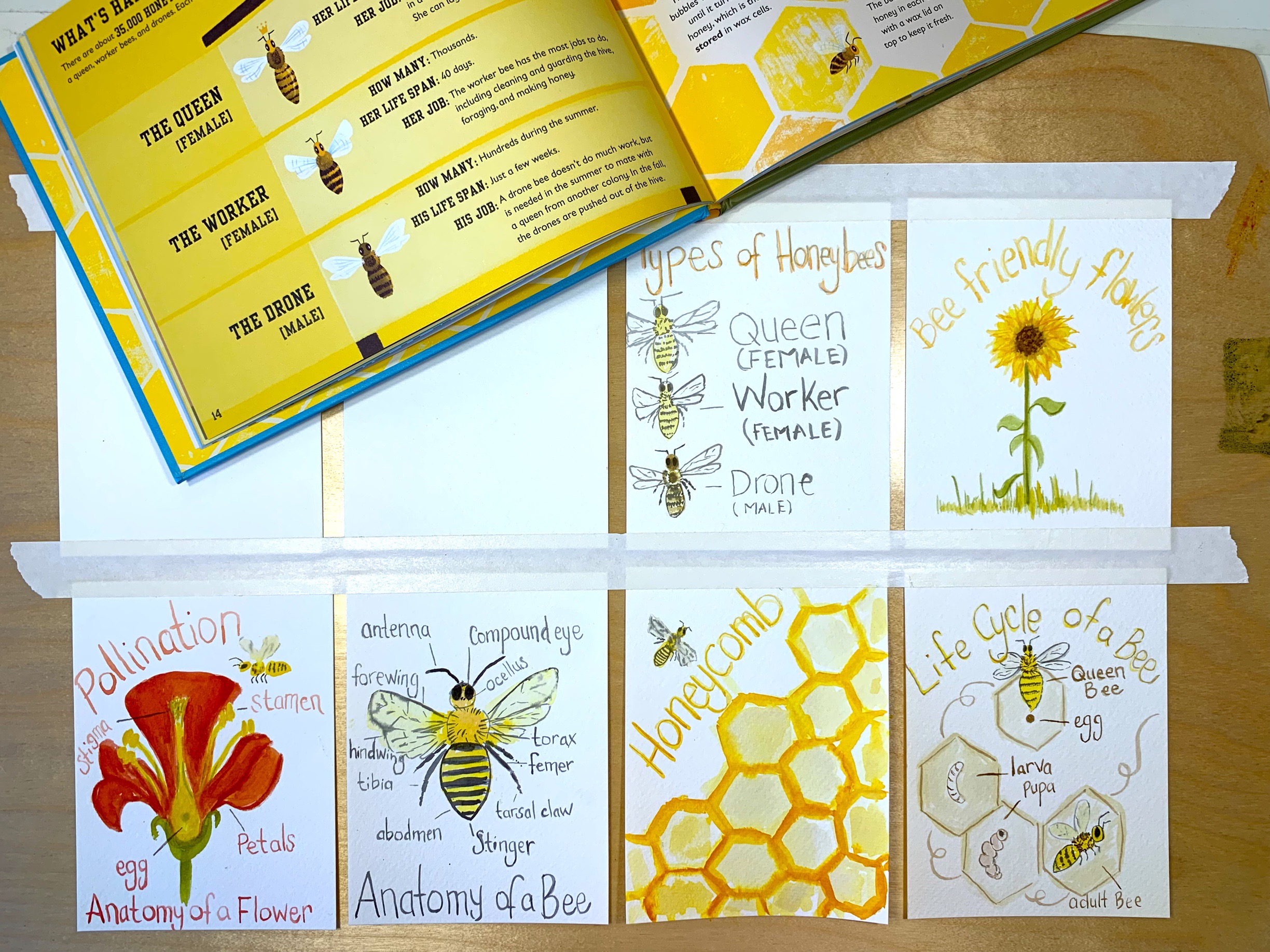
This project is a win, win, win. Not only are you creating beautiful cards with illustrations on one side, you are also synthesising the information you’ve learned during a unit to produce questions and answers. That skill is underutilized and underestimated as a teaching and learning tool. It’s harder than you think. You have to know the information well enough to articulate questions. Then you have to make sure the answer is correct. The last ‘win’ for this project is that you can use this over and over again throughout the year! We love playing our trivia cards and have tried to make the questions as challenging as possible.
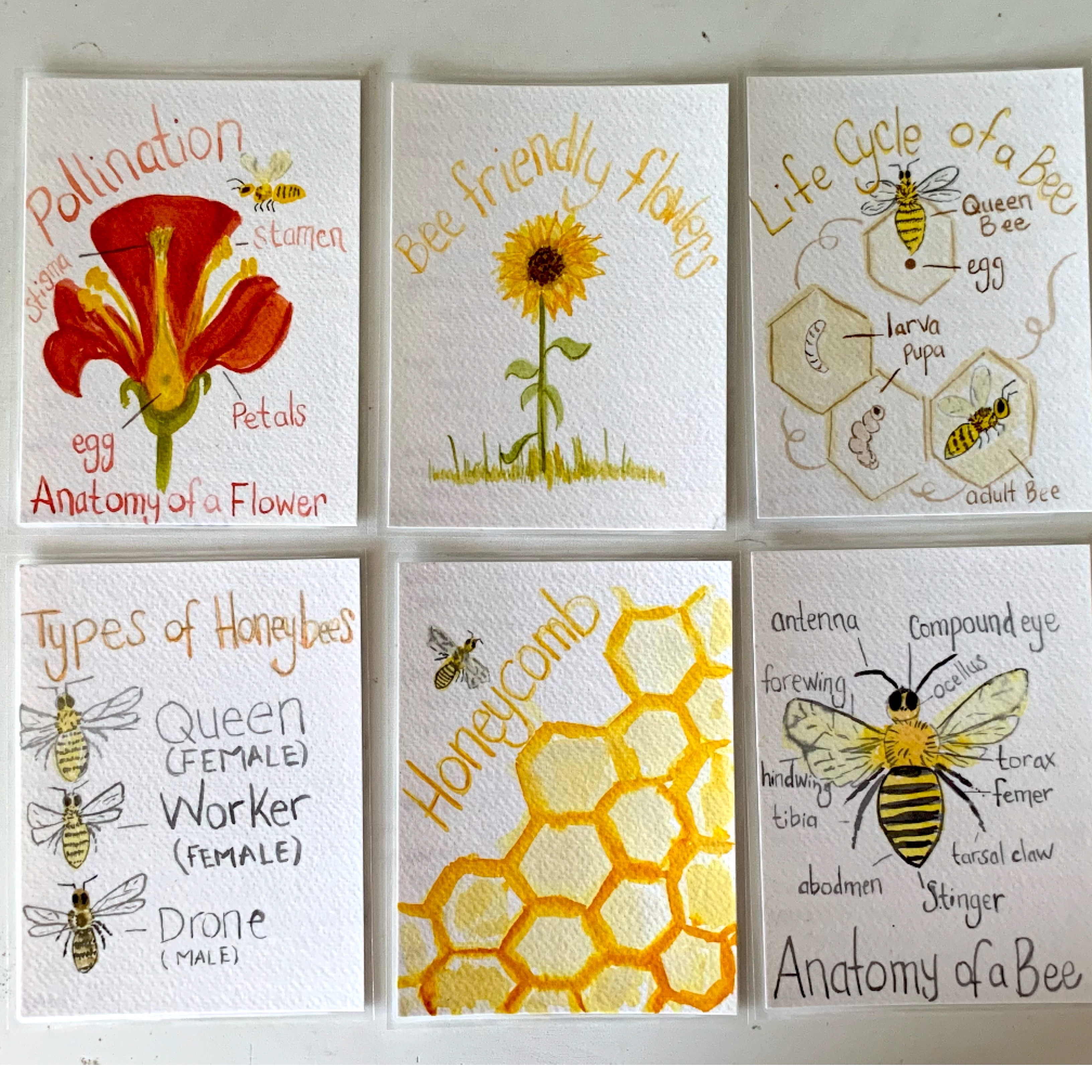
Usually, I’ll play my cards against my 13-year-old son who tires to (and usually succeeds at) answers the questions. If he answers correctly, he keeps the card. Then he plays his cards against mine. If I get the question right, I get the card! Then we tally up the score. This game is a great way to keep the learning alive long after the lesson or unit is complete. And over time, you can collect quite a collection of cards. Mix and match for an extra challenge! Just don’t forget to add your answers to the cards. We didn’t do that for our astronomy set, and it’s surprising how quickly you forget the answers!
Find me on YouTube, Twitter, Instagram and Facebook
Materials for this unit were purchased using charter school funds and were purchased from Acorn Naturalists and Nature-Watch. Art materials were purchased from Waldorf Supplies and A Child’s Dream.
Turn This Book Into A Beehive | How To Make A Mason Beehive
Who knew making a mason beehive was going to be so easy! Now the real test is whether this is actually going to work or not. Will be get mason bees calling this beehive home? We hope! In addition to planting bee-friendly flowers, we hope that we can safely attract bees to this DIY mason beehive from the book Turn This Book Into A Beehive by Lynne Brunelle.
The instructions were easy to follow, and you only need a few additional supplies to complete the project. The book cover itself is the the outer part of the beehive and the tubes are made by rolling several sheets of included paper. Additionally, you need tape, Duct tape (we used electrical tape) and string.
We did this project as part of our Bee Unit Study for my 8-year-old daughter and 13-year-old son. We purchased the book and did several projects. My daughter completed one beehive on her own with my help and then I purchased a second book for my son to complete the project as well. This can easily be a group project with several children rolling tubes and the adults helping assemble the outside of the beehive.
We are eager to see if this beehive attracts mason bees and we’ll be keeping a close eye on it come spring. We completed this project in the late fall as the weather turned, and I’m thinking we won’t get bees until the spring. We have our beehive hanging in the front yard where we get morning sun, but our bee-friendly flower garden is in the backyard. I’m hoping the placement of our hive is still encouraging to our solitary bees. Check back to see if we got any bees!
Materials for this unit were purchased using charter school funds and were purchased from Acorn Naturalists and Nature-Watch. Art materials were purchased from Waldorf Supplies and A Child’s Dream.
Find me on YouTube, Twitter, Instagram and Facebook
How To Grow A Bee Friendly Garden

Growing a Bee Friendly garden is just about as easy as growing wildflowers in a pesticide free urban garden. We used the Nature Watch classroom kit for Bee Garden Starter this project. The kit comes with everything you need to grow wildflowers in easy-to-transport containers for 25 students. We love the kits from Nature Watch and have used them in our homeschool for years. This kit comes with the 100 soil pellets, 25 containers and straws and enough seeds to use this kit twice! We learned a lot about bees from this kit as well as the other resource material we used during our Bee unit Study. Check the progress of this kit by seeing updates on Instagram or on this blog post. So far they grew pretty big but didn’t flower.


Materials for this unit were purchased using charter school funds and were purchased from Acorn Naturalists and Nature-Watch. Art materials were purchased from Waldorf Supplies and A Child’s Dream.
Find me on YouTube, Twitter, Instagram and Facebook
How To Make A Beehive | Hexagon Cells | Life Cycle of a Bee
This project doesn’t have to be this complicated! But as usual, I’ve taken it up a notch. We decided to use beeswax, rice and pollen to mimic the stages of the life cycle of a honeybee. The process was fascinating but laborious.




Bee Unit Study Review | Charlotte Mason Living Books
It’s hard to narrow down the best books for this unit. Each one was fabulous, informative and beautifully illustrated. Each one delivered the information in a lively way and each resource had something the others didn’t have. Nonetheless, if you did have to pick just a few books, I’m partial to the new ones we got for this unit. I loved Bees A Honeyed History by Piotr Socha because it brought a historical element to our unit, and I do love diversifying our units. New for us this time around was the activity book Turn This Book Into A Beehive by Lynne Brunelle. I love adding hands-on activities to our unit and this book did not disappoint! The projects were easy to do and the best part was actually turning the book into an actual beehive!







Our favorite storybooks were The Honeybee, The Bumblebee Queen and Are You A Bee?. The Bee Book was packed with info included up-to-date info on the impact of pesticides on the bee population. New for this unit was the Bee Garden Kit by Nature Watch. We do love our Nature Watch kits and this one educational and fun to do. We learned which types of flowers attract bees and why it’s important for urban gardens to have bee friendly flowers.
Materials for this unit were purchased using charter school funds and were purchased from Acorn Naturalists and Nature-Watch. Art materials were purchased from Waldorf Supplies and A Child’s Dream.











